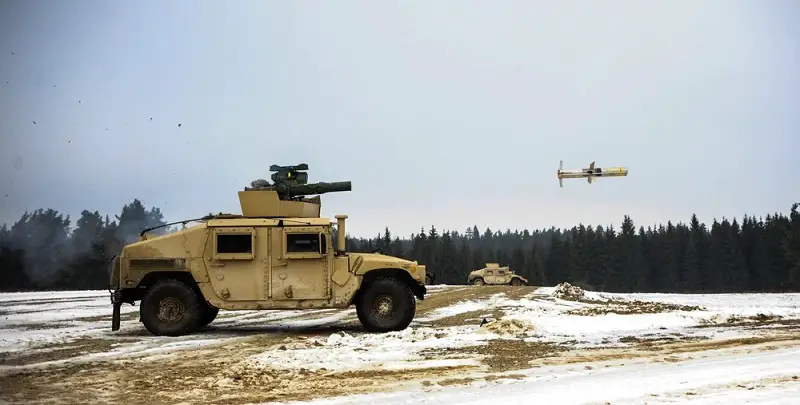Raytheon Land & Air Defense Systems, Tucson, Arizona, was awarded a $322,500,000 fixed-price-incentive contract to procure BGM-71F Tube-Launched, Optically-Tracked, Wireless-Guided 2B (TOW 2B) missiles. The BGM-71 TOW weapon system – with the multi-mission TOW 2A, TOW 2B and TOW Bunker Buster missiles designed by Hughes Aircraft in the 1960s, the weapon is currently produced by Raytheon. Work will be performed in Tucson, Arizona, with an estimated completion date of Sept. 30, 2026. Fiscal 2021 and 2023 missile procurement, Army funds in the amount of $322,500,000 were obligated at the time of the award. U.S. Army Contracting Command, Redstone Arsenal, Alabama, is the contracting activity (W31P4Q-23-C-0026).
The BGM-71 TOW replaced much smaller missiles like the SS.10 and ENTAC, offering roughly twice the effective range, a more powerful warhead, and a greatly improved semi-automatic command to line of sight (SACLOS) that could also be equipped with infrared cameras for night time use. First produced in 1970, TOW is one of the most widely used anti-tank guided missiles. It can be found in a wide variety of manually carried and vehicle-mounted forms, as well as widespread use on helicopters. The weapon is used in anti-armor, anti-bunker, anti-fortification and anti-amphibious landing roles. TOW is in service with over 45 militaries and is integrated on over 15,000 ground, vehicle and helicopter platforms worldwide.

The Tube-Launched, Optically-Tracked, Wireless-Guided 2B (TOW 2B) flies over the target and has a downward facing shaped charged warhead. TOW 2B operates in a ‘flyover shoot down’ top attack mode, unlike other versions which are direct attack. It features a dual-mode target sensor designed by Thales (formerly Thomson-Thorn), which includes laser profilometer and magnetic sensor, and a new warhead section, produced by Aerojet. It resembles the TOW 2A but without the extendible probe and is armed with two explosively formed tantalum penetrator (EFP) warheads. The EFP warheads detonate simultaneously, one pointing downwards, the other slightly offset to give an increased hit probability. The warhead material is designed to generate pyrophoric effects within the damaged target.
The TOW 2A, TOW 2B and TOW Bunker Buster missiles can be fired from all TOW weapon system launchers – including the ITAS™ launcher, Stryker anti-tank guided missile vehicle (modified ITAS launcher) and Bradley Fighting Vehicles (improved Bradley Acquisition Subsystem). With its extended range performance, the TOW missile is the long-range precision, heavy anti-tank and assault weapon system of choice for the U.S. Army Stryker, Bradley Fighting Vehicle, ITAS High-Mobility Multipurpose Wheeled Vehicle and Light Armored Vehicle-Anti-tank platforms. Recent U.S. Army qualification tests verified updates and improvements to the system’s top-down attack capabilities and demonstrated TOW’s operational effectiveness.
















